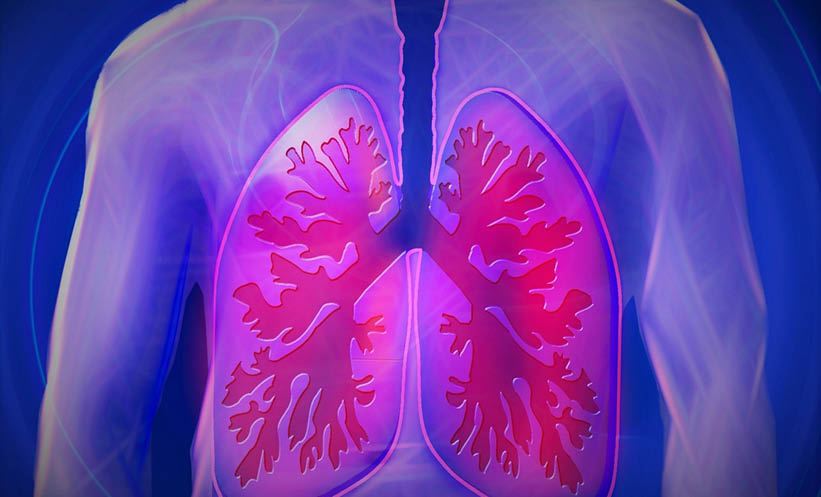Written by Russell Winwood
![]()
Some of you may have read my EMJ blog titled ‘The Four Pillars of Living Well with COPD’, which was published last year. Since then, I have travelled to many places, talking to patients and respiratory professionals about how I manage my disease. What has become apparent to me is the lack of importance placed on nutritional strategies to help patients better manage their disease.
The Evidence
Nutritional strategies can make a huge difference to a patient’s quality of life; I know this because they have to mine. More and more studies are being published about the anti-inflammatory properties of certain foods. A review by researchers from Hunter Medical Research Institute, Newcastle, Australia, has shown how nutritional strategies can modify airway inflammation.1
In 2003, a study on the effect of supplementing a high-fat, low carbohydrate enteral formula in chronic obstructive pulmonary disease (COPD) patients showed significant improvement in lung function was recorded by patients taking the high-fat low-carbohydrate supplement, compared with patients on a standard high carbohydrate diet.2
Studies show the NLRP3 inflammasome has an important role to play in airway inflammation.3 Suppression of the NLRP3 inflammasome might be modified into a therapeutic strategy for COPD in the future; a study into the effects of ketone bodies on the NLRP3 inflammasome showed the ketone body β-hydroxybutyrate can suppress the NLRP3 inflammasome.4 This would suggest a ketogenic diet could be a useful nutritional strategy for respiratory patients.
The ketogenic diet is suggested in some circles to be a fad diet. In reality, this diet has been used since the 1920s for its anti-seizure properties and the effect it has on refractory epilepsy.5 One of the arguments against the use of ketogenic diets is the high fat content, which can range between 70–90% depending on its application. Some healthcare professionals believe this could be dangerous for certain patients who are managing several disease states. However, while the fat debate rages on, the truth is any dietary change for a patient with chronic disease should be undertaken with the guidance of, and while being monitored by, their healthcare professional. By monitoring the progress of patients, healthcare professionals can see if there is any adverse effect taking place.
Why is the Evidence Ignored?
I have asked this question of many healthcare professionals and the most common answer is: ‘We are not trained in nutrition.’ It is understandable why you would not embark on a nutritional strategy to help with a patient’s symptoms if you have no training, but I believe this is why we have dietitians. Healthcare professionals with no nutritional experience have a valuable underutilised resource which can significantly improve a patient’s quality of life.
I have attended respiratory conferences where speakers refer to a multi-disciplinary team (MDT) to help manage a respiratory patient’s disease. While dietitians are listed in the make-up of a MDT, the mention of how they might be used is not. The focus seems to be on pharmaceutical pulmonary rehabilitation and surgical interventions, with no mention of the most cost-effective intervention: diet.
A multi-disciplinary approach to manage respiratory disease is an absolute must for both patient and healthcare professional. For a patient, there needs to be an acceptance to be a good manager of their disease; knowledge, medication, nutrition, and exercise encompass important strategies for patients to incorporate into their management plans. They are also key elements for any MDT. If you are going to have dietitians in a MDT, it is important to understand how their expertise may be used.
To balance this discussion, in my experience some dietitians do not help their cause. In the last 12 months, I have listened to three dietitians talk about their nutritional recommendations for respiratory patients. There was little uniformity in their recommendations of nutritional advice and much of the advice was contradictory. In one particular instance, when I asked the other patients seated with me if they had a better understanding of what they should eat, the overwhelming answer was no; in fact, many said they were more confused after listening to the dietitian.
I have put these recommendations into practice with the only noticeable difference being an increase in symptoms, though this is not to say the recommendations wouldn’t work for other patients. I personally believe dietitians would enhance their chances of being utilised in a MDT and by patients if they had a uniformed general approach, coupled with the advice that suggests nutritional strategies can differ between patients.
My Experience
There is a growing amount of evidence-based nutritional strategies that can be applied to patients to enhance their quality of life. I have personally used paleo, low carbohydrate, and ketogenic diets for nearly 2 years with great success. I have been able to dramatically reduce inflammation markers and improve lung function, which are two scientifically proven benefits of the nutritional strategies I use.
Given the science behind low carbohydrate, high-fat, and ketogenic diets, isn’t it time we, as a respiratory community, started to implement these strategies? The burden on health care systems globally is increasing. If simple, inexpensive strategies can help reduce admissions and improve patient’s quality of life, then should we not be exploring them?
My own experience has shown that one benefit of finding a nutritional strategy which works is a very productive knock-on effect regarding exercise tolerance, as well as improved day-to-day living. Those of you who are at the frontline of treating respiratory patients will know that improving a patient’s outlook is a very powerful motivator for improved quality of life.
While these diets may not suit everyone, they will suit many. With some estimates of COPD numbers globally >200 million, there is an opportunity to improve many lives. If nutritional strategies improved the quality of life in 1% of patients, this would equate to 2 million people. Imagine the reduction in the burden to our healthcare systems.
With patient numbers predicted to increase in coming years, now is the time to act. We need to utilise every available tool to maximise the impact on patients, both in the elderly and younger age groups.
References
- Berthon BS, LG Wood. Nutrition and respiratory health—Feature review. Nutrients. 2015;7(3):1618-43.
- Cai B et al. Effect of supplementing a high-fat, low-carbohydrate enteral formula in COPD patients. Nutrition.2003;19(3):229-32.
- Yang W et al. NLRP3 inflammasome is essential for the development of chronic obstructive pulmonary disease. Int J Clin Exp Pathol. 2015; 8(10): 13209-16.
- Youm YH et al. The ketone metabolite β-hydroxybutyrate blocks NLRP3 inflammasome-mediated inflammatory disease. Nat Med.2015;21(3):263-9.
- Barañano KW, Hartman AL. The ketogenic diet: uses in epilepsy and other neurologic illnesses. Curr Treat Options Neurol. 2008;10(6): 410-9.








